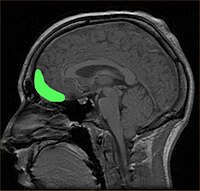
Photo from wikipedia
OBJECTIVE Research suggests that impulsivity is a risk factor for problem drinking, but prior studies have yet to examine typical drinking context as a potential moderator of relations between impulsivity… Click to show full abstract
OBJECTIVE Research suggests that impulsivity is a risk factor for problem drinking, but prior studies have yet to examine typical drinking context as a potential moderator of relations between impulsivity and drinking outcomes. Guided by Person-Environment Transactions Theory, the current study tested whether five facets of impulsivity (negative urgency, positive urgency, lack of premeditation, lack of perseverance, and sensation seeking) interacted with typical drinking context to prospectively predict drinking quantity. METHOD Young adult participants (N = 448; mean age = 22.27) were recruited from a southwestern university and the surrounding community. Data from a baseline survey (Time [T] 1) and a 1-year follow-up (T2) were used for the current analyses. Impulsivity (UPPS-P Impulsive Behavior Scale), typical drinking context, and typical drinking quantity were assessed at T1, and typical drinking quantity at T2. RESULTS Context items were loaded onto latent factors comprising high-arousal (e.g., at a tailgate, large house party) and low-arousal (e.g., at a restaurant, on a date) drinking contexts. In univariate (separated by UPPS-P facet) and multivariate (UPPS-P facets together) models, lack of premeditation and positive urgency interacted with high-arousal drinking contexts to predict T2 drinking, such that individuals at high/mean levels of impulsivity drank more heavily the more frequently they drank in high-arousal contexts. Only interactions in univariate models remained significant after a false discovery correction, although effect sizes were very similar across univariate and multivariate models. CONCLUSIONS Individuals high in positive urgency and lack of premeditation may be particularly vulnerable to riskier drinking behavior in high-arousal environments. Findings advance the literature on context-specific cues that may be important intervention targets, particularly for individuals high in positive urgency and lack of premeditation.
Journal Title: Journal of studies on alcohol and drugs
Year Published: 2022
Link to full text (if available)
Share on Social Media: Sign Up to like & get
recommendations!